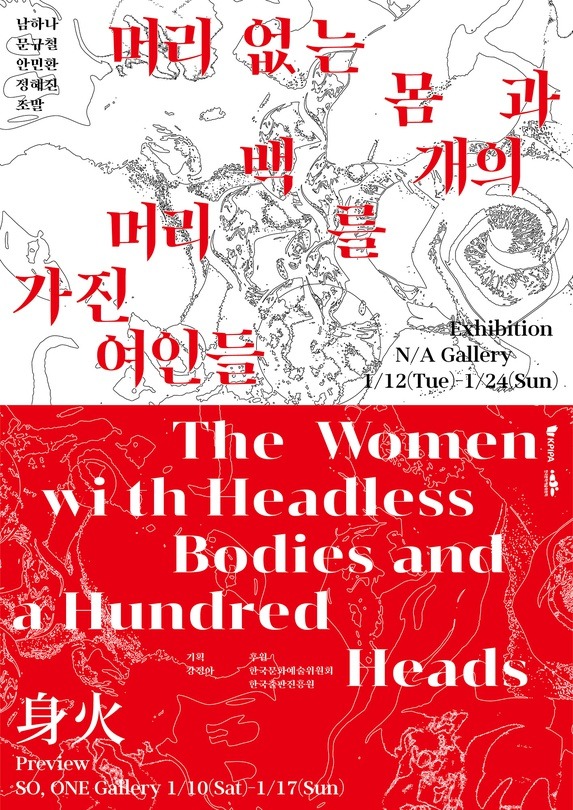
| Period| | 2021.01.12 - 2021.01.24 |
|---|---|
| Operating hours| | Tue-Sun:12:30~19:30 |
| Space| | N/A gallery/Seoul |
| Address| | 27, Changgyeonggung-ro 5-gil, Jung-gu, Seoul, Republic of Korea |
| Closed| | Monday, Tuesday, Wednesday |
| Price| | Free |
| Phone| | 010-2563-7499 |
| Web site| | 홈페이지 바로가기 |
| Artist| |
남하나,문규철,안민환,정혜진,조말
|
정보수정요청



|
|
Exhibition Information
The story begins with the ancient 'mother' myth, which symbolizes the woman of the land. We will search for the old traces of the first murdered Ji-mo, tracing the beginning of the plan to compare the body of Ji-mo, who brutally murdered the land we live in. This trace is also passed down throughout the world as a folktale or folktale. What we want to note in mythology is that the mother of the god is the source of the world and the torn body of the god becomes the material of the world. A myth is a dream of justified rule.However, the stories described here are all brutal flesh points, the history of the ten-year-olds, which are not intact. Myth is woven into flesh. Dream-mythology is a pre-lingual story, a holy and vulgar poem of violence left in the dream of civilization. During the reign of the world, the woven flesh is buried underneath it without decay. The severed flesh is based on Shinhwa's concealed incident. The structure of violence inherent in mythology is closely related to the murder of a female-monster in a heroic epic. Ancient Greek mythical heroes Perseus, Hercules, Bellephone, and Oedipus gained immortality by killing women-monsters. Greek heroes pass through the 'trial' by slaughtering the fearsome woman-monster. The narrative structure of violence is not only a rite of passage of hero mythology but also permeates the front of the myth. The war between the "Great Mother Goddess" and the "Male patriarch" appears not only in Greek mythology, but also in the ancient Near East Babylonian mythology. In particular, Babylonian mythology provides us with an extreme image of the murder of the "mother goddess." It is the Genesis of Babylonian mythology because the "mother goddess" is torn apart and created the world with its body. The first jimosin shows a scene in which a body that was killed and torn by a male god makes the world. Attention to Myth's "torn body" and "hidden events," this exhibition aims to discover how symbolism from the primitive matrilineal society to the paternal society is eroded within culture and history, and the buried remains of the torn body. If you want to live in the world, you have to create the world. It points out that no world can be born out of the homogeneity and confusion of the inner space. The myth of the story is torn into two spaces (Mangwon/Euljiro), and the myth that will be the beginning of the exhibition is shown ahead. A piece of origin, a piece of work that does not flow linearly on the axis of time, works as a mass and as a medium for narrative production. Never a piece of origin, a piece of work before a work, works as a mass and as a medium for narrative. It reveals a natural proposition that one work can never save the world. Excavation of buried remains will be hereditary. Therefore, the time that has been deflected, the events that have been cut, and the gaze that we see are all over the world. There is no eternal secret.
